The 9 Best B2B Marketing Tools and Platforms For 2025
Discover the top 9 B2B marketing tools for 2025. Learn how to build an integrated tech stack that drives leads, automation, and measurable ROI.
You've invested in B2B marketing tools, yet you still struggle to link those tools and your data to real business outcomes. You are not alone. Many B2B teams face this issue, budgets grow, yet results remain stagnant. Today, companies dedicate 15–20% of their marketing budgets on technology, but adding more tools rarely addresses the primary issues of disconnected workflows or cloudy ROI.
Things get worse when your team spends more time on juggling between tools than on strategy, or when you can't identify what's driving growth. The solution isn't more tools, but choosing integrated B2B marketing platforms, each chosen for its proven impact on lead generation, automation, analytics, and personalization.
In this guide, you’ll discover the nine best B2B marketing tools and platforms for 2025, helping you build a complete, future-ready technology solution.
TL;DR
- Pinpoint tools that integrate smoothly, align with business goals, and scale as volume grows.
- Prioritize platforms offering real-time intent detection, predictive scoring, and multi-touch attribution.
- Combine marketing automation, SEO analysis, creative design, and data orchestration for end-to-end coverage.
- Continuously audit your stack to close gaps, harness new features, and maintain a unified analytics view.
The Importance Of Your 2025 B2B Marketing Tech Stack
In 2025, a strategic B2B marketing tech stack is non-negotiable. Buying journeys are more complex, and teams expect personalized experiences. Your technology should do more than just automate tasks. It should connect data, streamline workflows, and provide clear insights.
With the right stack, you can:
- Identify high-value leads by combining intent signals and account data
- Engage prospects with targeted, relevant content at every touchpoint
- Measure the impact directly on the pipeline and revenue
Conversely, disconnected tools breed data silos, squandered budgets, and lost opportunities. Without consolidated analytics, you can’t prove ROI or optimize campaigns in real time. As more teams adopt account-based marketing tactics and intent data, an outdated tech setup means missing qualified buyers and ceding ground to competitors.
A modern B2B marketing stack isn’t about following trends. It’s about building a system that grows with your business, supports your team’s goals, and shows clear results. By investing in the right platforms now, you’ll be ready to adapt to new channels, rules, and buyer needs in 2025 and beyond.
Criteria for Choosing the Right B2B Marketing Tools in 2025
Selecting the best B2B marketing tools isn’t just about choosing the most popular brands. Consider these criteria to make sure your stack drives real impact for your demand-gen and growth-marketing teams.
- Aligns with Your Goals
Pick tools that directly advance your key objectives, whether that’s generating qualified leads, boosting conversion rates, or improving campaign visibility. - Solves a Concrete Problem
Every tool should address a specific pain point in your workflow. For example, automating follow-up emails, scoring leads, or unifying analytics. - Seamless Integration
Verify that the solution plugs into your existing tech stack without friction, so data flows freely and your teams avoid siloed information. - Scales with Your Growth
Choose platforms built to expand alongside your business. They should handle more users, campaigns, and channels without slowing down. - Actionable Analytics & Reporting
Look beyond surface-level metrics. The ideal tool delivers clear, data-driven insights that guide smarter marketing decisions. - Security & Compliance
Confirm the vendor meets industry-leading privacy and security standards (GDPR, CCPA, SOC 2, etc.) to protect your customer data. - Intuitive User Experience
A clean, straightforward interface reduces training time, increases adoption, and keeps your team moving fast. - Trusted Vendor & Support
Research customer reviews, case studies, and service benchmarks. You want a partner known for responsive, expert support whenever you need it.
9 Must-Have B2B Marketing Tools & Platforms for 2025
Equip your demand-generation and growth teams with the right tech to accelerate pipeline, automate workflows, and extract actionable insights.
Here are nine platforms set to drive measurable results in 2025:
1. Factors.ai
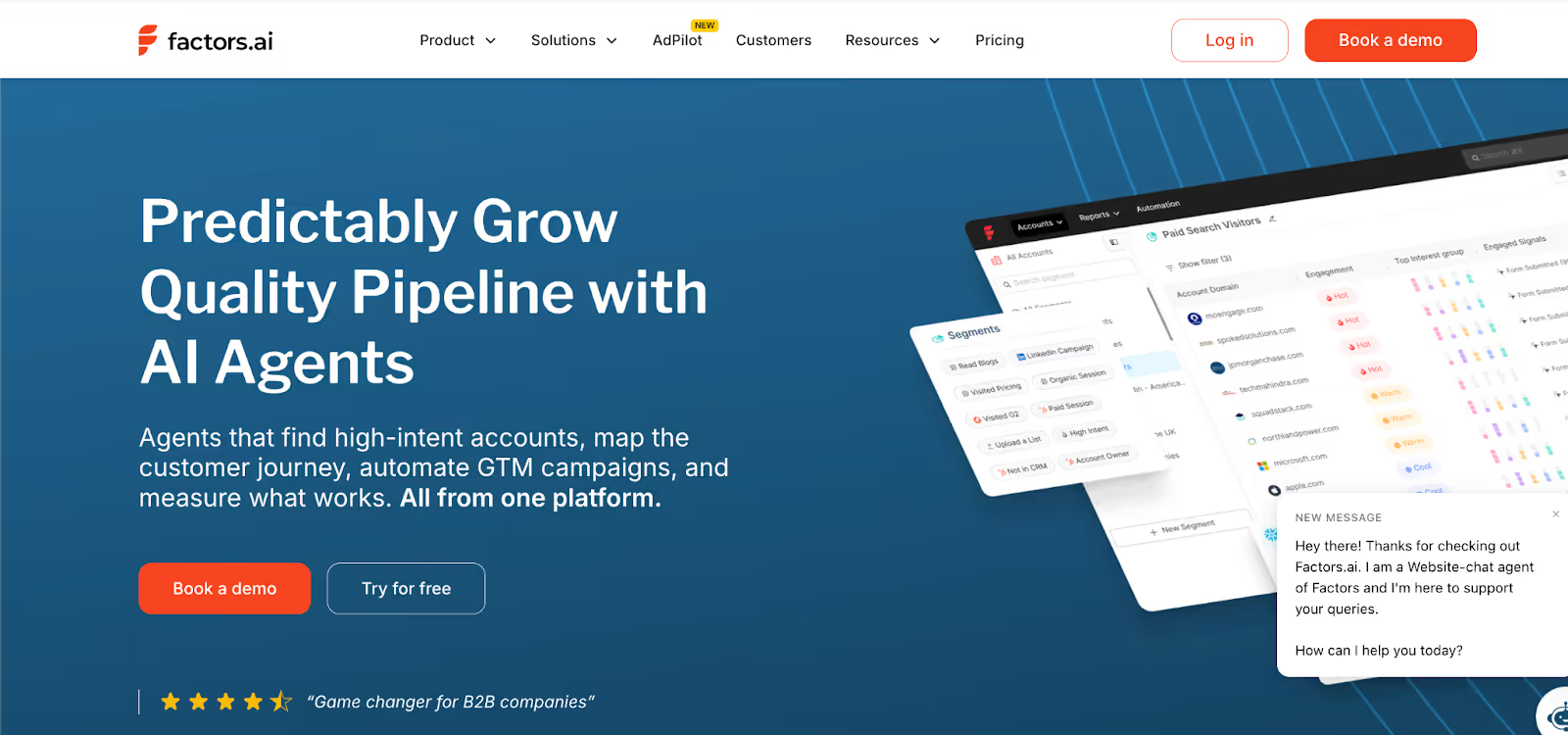
Factors.ai is built for B2B teams focused on marketing intelligence, attribution, and running targeted ABM campaigns. It unifies behavioral signals to identify high-intent accounts. Predictive account scoring, multi-touch attribution, and journey visualization are all part of its offering that helps you get a crystal-clear view of every account’s engagement. The platform integrates with major CRMs and requires no coding to set up. It’s designed to speed up sales readiness with real-time alerts. A strong choice for data-driven, product-led teams.
Key Features:
- Unified Scoring Engine: Merges CRM, ad, and web data into a single model to generate actionable account score and insights.
- Sales-Ready Detection: Uses behavior signals and predictive scores to flag warm accounts for immediate sales outreach.
- PQL Identification: Identifies product-qualified leads from app usage. This aids product-led growth strategies.
- Intent Alerts: Sends real-time alerts for accounts showing high buying intent. This keeps the teams agile.
- No-Code Deployment:Set up and customize the platform without any developer support, perfect for lean teams.
- CRM Integration: Bi-directional sync with tools like Salesforce and HubSpot. Maintains updated lead records.
- Multi-Touch Attribution: Tracks revenue impact across every marketing touchpoint for clearer ROI insights.
- Journey Visualization: Displays a session-by-session timeline of account activity to reveal full-funnel engagement.
- Slack/Email Notifications: Sends alerts directly to sales reps, accelerating outreach time.
Pricing:
Factors has a forever free plan. The paid plan starts at $ 5,000 per year. For more details, visit our pricing page.
2. HubSpot
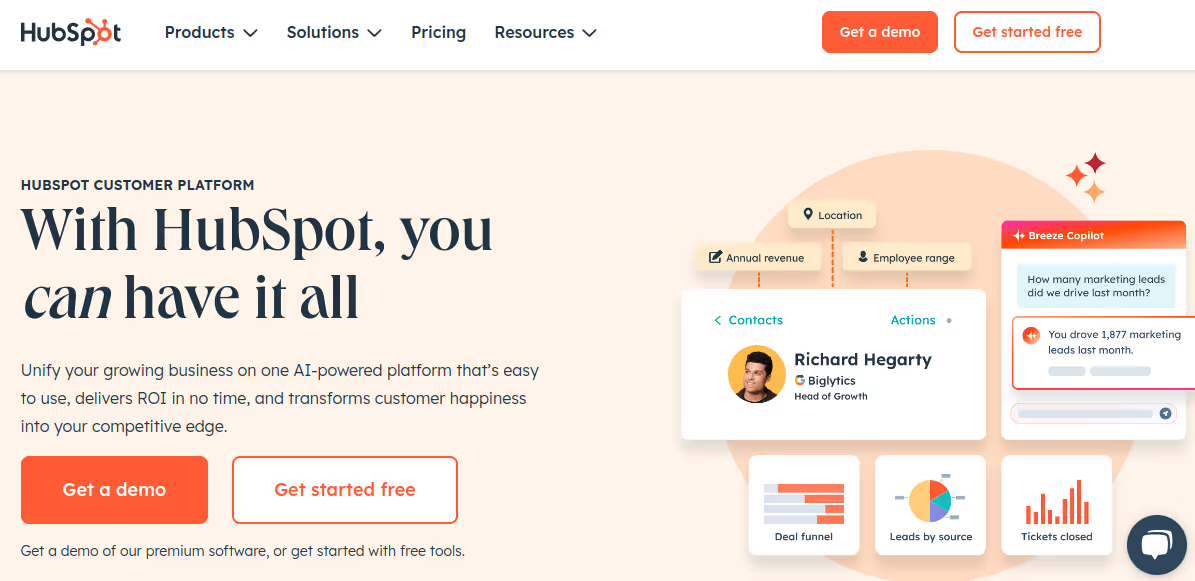
HubSpot empowers B2B teams to scale demand generation by uniting sales, marketing, and service in one AI-driven platform. Its AI-powered lead scoring and dynamic content deliver personalized engagement at scale, while automation workflows and advanced analytics streamline your inbound strategy. With campaign tools for precise targeting and real-time performance tracking, HubSpot keeps your growth engine running smoothly.
Key Features:
- Predictive Lead Scoring: Uses AI to score leads based on conversion likelihood. It boosts sales prioritization.
- CRM Integration: Consolidates customer touchpoints in one place. Enhances collaboration across teams.
- Marketing Automation: Automates follow-ups, lead nurturing, and tasks. Increases operational efficiency.
- Segmentation Tools: Leverage behavioral, lifecycle, and attribute data to create hyper-targeted lists and deliver personalized outreach.
- Campaign Analytics: Monitors email, ad, and social campaign performance. Measures ROI in real time.
- A/B Testing: A/B tests subject lines, layouts, and content. Optimizes for best-performing elements.
- Personalized Content: Dynamically displays tailored content per user. Increases relevance and engagement.
- Ad Management: Launches and tracks ads from a central hub. Unifies multi-platform advertising.
- Multi-Touch Attribution: Tracks multiple campaign touchpoints per lead. Aids budget allocation.
Pricing:
It has a free plan with limited capabilities. Paid plan starts at $15/month.
3. Marketo Engage (Adobe)

Marketo Engage by Adobe is designed for enterprise-level B2B marketing. It handles automation, lead nurturing, and revenue attribution. Built-in ABM features help target and engage high-value accounts. Deep CRM integration ensures sales alignment. AI features personalize content to improve conversion. Marketo is tailored for complex buying journeys.
Key Features:
- Behavioral Lead Scoring: Analyzes content views and site visits to score leads. Supports better qualification.
- Email Nurturing: Sends timely emails triggered by user actions. Keeps prospects engaged.
- ABM Capabilities: Runs personalized campaigns across channels. Reaches target accounts effectively.
- Salesforce Integration: Syncs leads and activities with Salesforce CRM. Maintains data integrity.
- Form & Landing Page Builder: Easy-to-use tools to create lead capture assets. Accelerates deployment.
- Real-Time Personalization: Adjusts content based on visitor behavior. Enhances web experience.
- Analytics Dashboards: Shows pipeline and campaign performance in real time. Informs strategy decisions.
Pricing:
Public pricing isn’t available.
4. 6sense
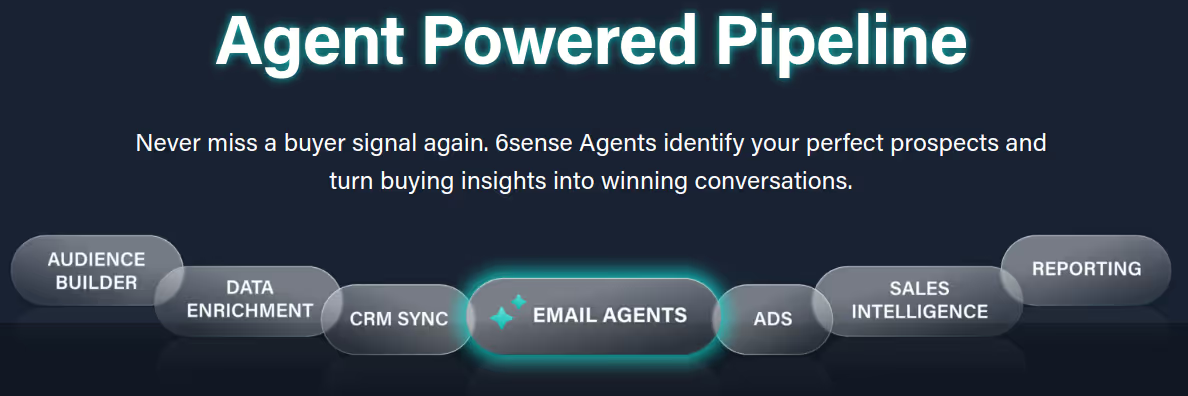
6sense is a B2B intent and predictive analytics platform. It uncovers anonymous buying behavior and provides AI-powered lead scores. Users can launch personalized ABM campaigns based on intent data. Sales and marketing teams get real-time insights on account activity.
Key Features:
- Buyer Intent Data: Uses third-party data to detect in-market accounts. Prioritizes outreach efforts.
- ABM Orchestration: Aligns multi-channel engagement by account stage. Personalizes every touchpoint.
- Dynamic Segmentation: Automatically updates segments using behavior data. Ensures timely targeting.
- Ad Personalization: Customizes ad creatives per account group. Boosts engagement and CTRs.
- CRM & MAP Integration: Syncs with Salesforce and Marketo. Reduces data duplication.
- Journey Analytics: Visualizes buying stages and engagement trends. Refines campaign effectiveness.
Pricing:
Public pricing isn’t available.
5. Ahrefs
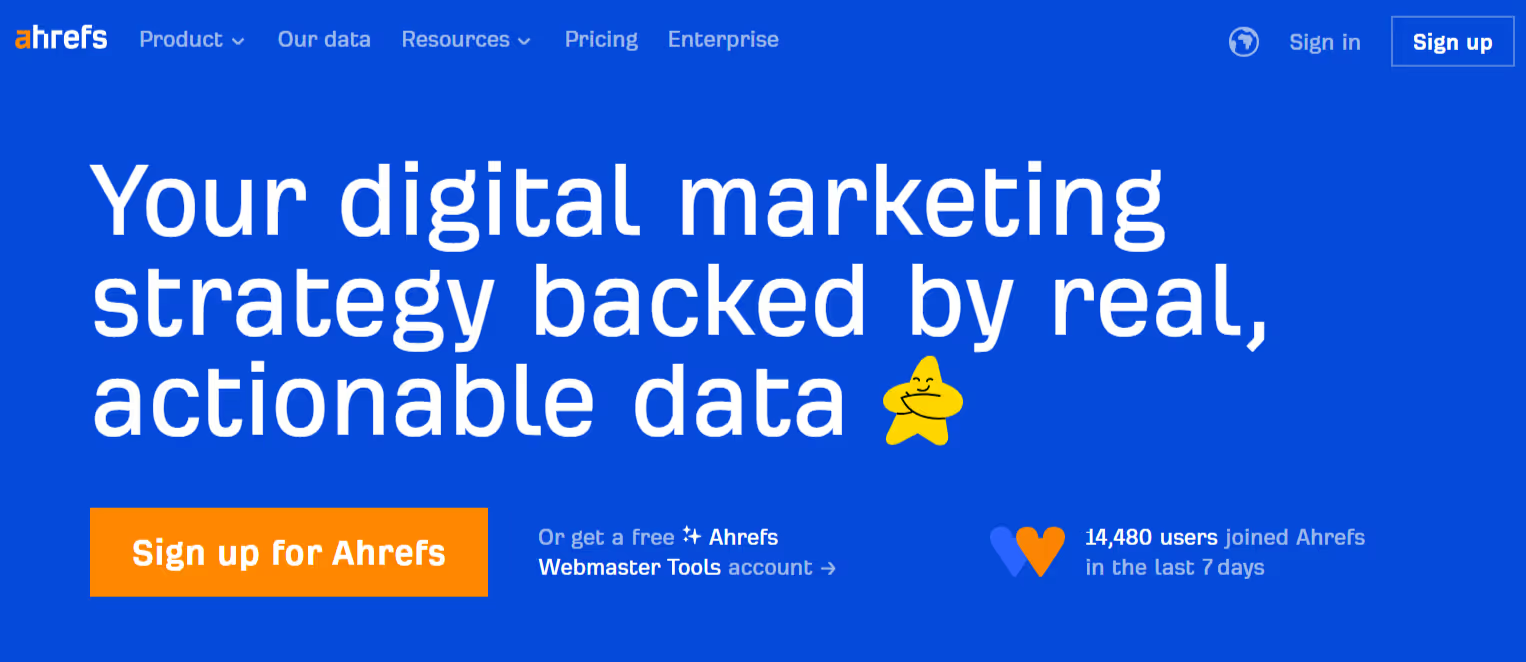
Ahrefs is a top-tier SEO tool used to improve organic traffic. It supports keyword research, backlink analysis, and competitive benchmarking. Marketers use it to craft content strategies and monitor performance. It provides deep insights into search visibility and technical SEO. Ideal for content-driven B2B growth. Ahrefs is also known for its massive data index.
Key Features:
- Site Explorer: Research competitor backlinks, keywords, and traffic. Identifies strategic gaps.
- Keyword Explorer: Finds profitable keywords by volume and difficulty. Prioritizes high-opportunity topics.
- Content Explorer: Uncovers high-performing content across topics. Informs editorial calendars.
- Backlink Checker: Audits your and your competitors’ backlinks. Strengthens link-building strategy.
- Rank Tracker: Tracks keyword positions across time and regions. Monitors SEO growth.
- Site Audit: Crawls sites for SEO and technical issues. Supports site improvements.
- API Access: Extracts data to custom dashboards or tools. Supports advanced users.
- Domain Comparison: Compares SEO metrics across sites. Aids competitor benchmarking.
Pricing:
It has a free plan with limited features. Paid plan starts at $129 per month
6. Canva

Canva is a design platform for non-designers and creative teams alike. It provides templates and drag-and-drop tools for rapid content creation. Ideal for B2B teams needing social graphics, decks, and ads. Teams can collaborate on designs in real time. Canva maintains brand consistency with brand kits. Export and scheduling tools complete the workflow.
Key Features:
- Templates Library: Browse thousands of ready-made designs. Accelerates content creation.
- Brand Kit: Save logos, fonts, and brand colors for future use. Ensures visual consistency.
- Collaboration Tools: Share files, add comments, and co-edit. Enhances team coordination.
- Drag-and-Drop Interface: Create visuals without design skills. Simplifies design workflows.
- Export Flexibility: Save files in formats like PNG, PDF, or PPTX. Supports various platforms.
- Design Folders: Organize assets by project or campaign. Improves accessibility.
- Integration Extensions: Connect Canva to tools like Google Drive. Simplifies file sharing.
Pricing:
It has a free plan.
7. Funnel
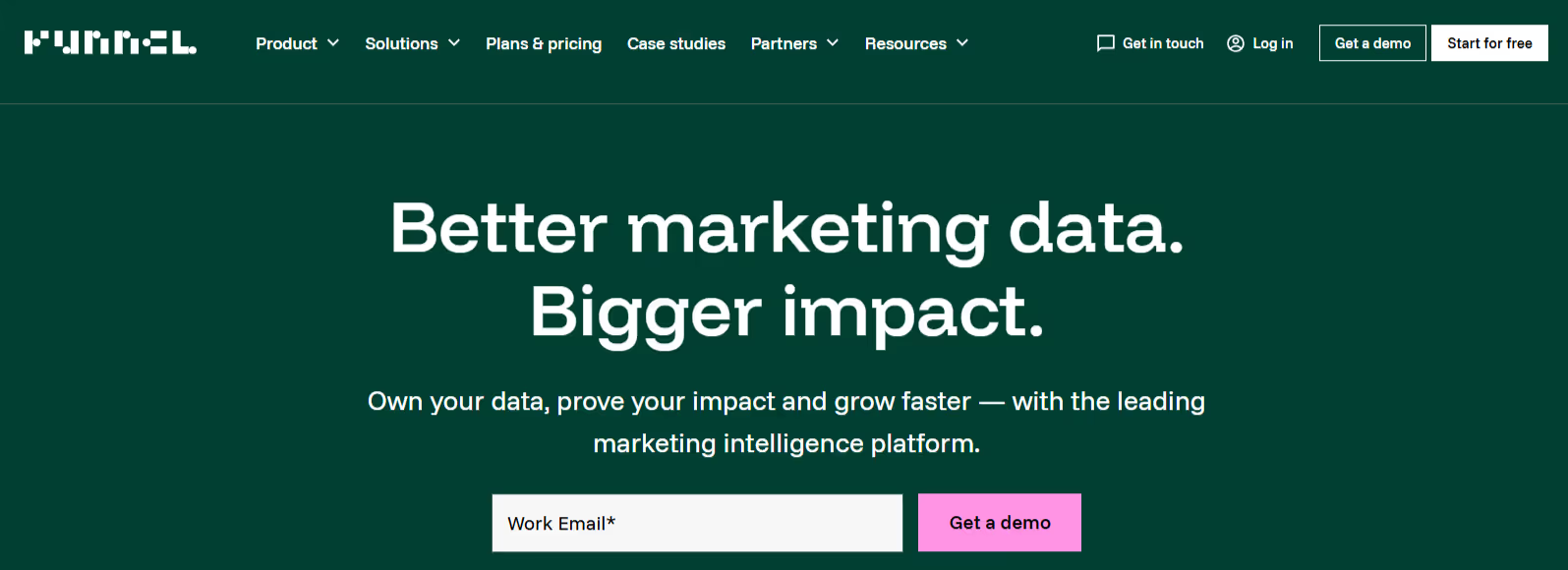
Funnel centralizes marketing data across platforms. It cleans, maps, and exports data into dashboards and BI tools. This enables real-time reporting and analysis. Marketers use it to streamline attribution and campaign performance. With over 500 data connectors, it reduces manual work. Funnel supports secure collaboration and scale.
Key Features:
- Data Connectors: Links 500+ platforms automatically. Eliminates manual data pulls.
- Custom Metrics: Create unique performance indicators. Tailor analysis to business goals.
- Scheduled Exports: Sends data to Sheets, Looker, or dashboards. Keeps reports updated.
- Reporting Dashboards: Build custom visuals for KPIs. Enhances team visibility.
- Team Collaboration: Control access levels across users. Maintains security.
- Compliance Ready: Certified with GDPR and SOC2. Ensures enterprise-grade security.
- API Access: Integrates data directly into internal tools. Supports custom use cases.
Pricing:
It has a free plan. Paid plan details aren’t available.
8. LinkedIn (Marketing Solutions)
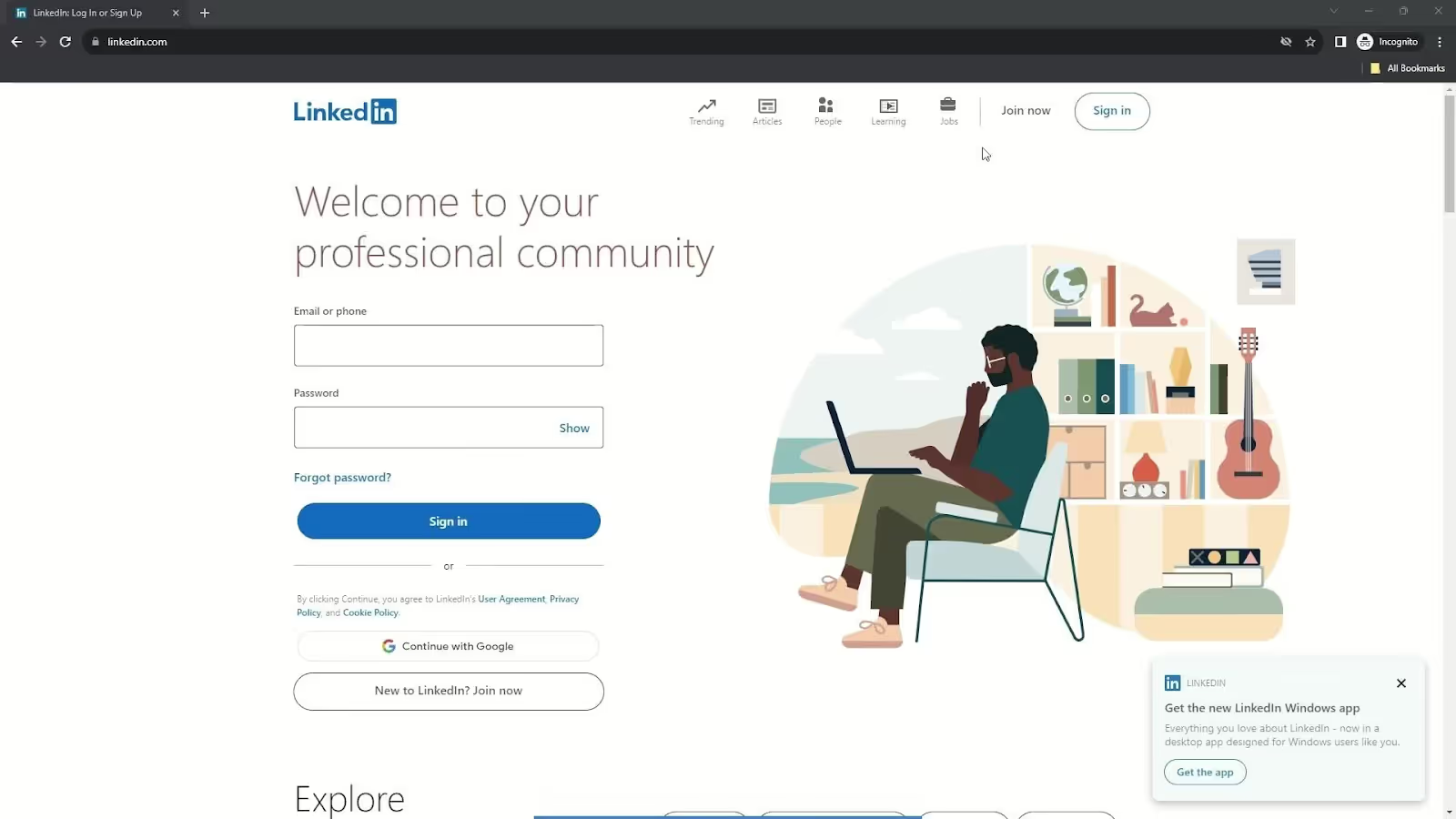
LinkedIn Marketing Solutions gives B2B marketers access to the world's largest professional network. It excels in precise audience targeting and ABM. Features like Lead Gen Forms and InMail boost engagement. Performance tracking is built in through Campaign Manager. Perfect for top-of-funnel awareness and conversion. LinkedIn is essential for B2B brand building.
Key Features:
- Audience Targeting: Filter by industry, seniority, or company size. Ensures precise outreach.
- Sponsored Content: Promote blogs, offers, or videos natively. Boosts visibility and engagement.
- Lead Gen Forms: Capture leads directly on LinkedIn. Reduces conversion friction.
- InMail Ads: Deliver personalized messages to inboxes. Increases open and response rates.
- Website Retargeting: Show ads to past visitors. Increases chances of reconversion.
- Matched Audiences: Upload email lists for retargeting. Powers personalized ABM.
- Conversion Tracking: Tracks actions like downloads or sign-ups. Measures ROI.
- Event Promotions: Advertise webinars and online events. Expands your reach.
- Campaign Manager: Manage budgets, creative, and results. Centralizes ad operations.
9. Mutiny

Mutiny personalizes website experiences for B2B buyers. It requires no engineering effort to implement. Teams can create personalized headlines, CTAs, and landing pages based on user data. Playbooks and templates speed up launch. Analytics show the impact on conversion. It integrates with CRM and enrichment tools for targeting.
Key Features:
- Real-Time Personalization: Adjusts site content based on visitor traits. Makes messaging more relevant.
- Segment Targeting: Build audiences from firmographic and behavioral data. Sharpens targeting.
- Visual Editor: Change web elements with a no-code tool. Simplifies test creation.
- Playbooks: Use tested templates to speed up personalization. Reduces setup time.
- A/B Testing: Compare different site versions. Finds top-performing variants.
- Analytics Dashboard: Measures the impact of each change. Tracks uplift in conversions.
- CRM & MAP Integrations: Sync with Salesforce, HubSpot, and others. Keeps data in sync.
- Onboarding Support: Offers personalized setup assistance. Ensures fast adoption.
Pricing:
Public pricing isn’t available.
Together, these platforms create a comprehensive B2B marketing ecosystem—covering everything from lead generation to analytics and personalized outreach. Integrating Factors.ai into your existing stack amplifies your strategy, driving clearer insights and faster pipeline growth.
Final Thoughts on Choosing the Right Marketing Solution Tool
Building a strong B2B marketing tech stack for 2025 involves more than choosing popular tools. It's about finding solutions that match your business goals, integrate well, and support your team. The nine platforms discussed cover key areas: automation, analytics, personalization, and design. When combined thoughtfully, these tools create a smooth workflow, provide useful insights, and deliver measurable results.
Your stack should grow with you. Audit it regularly to spot gaps or redundancies, and stay alert for feature updates that boost efficiency or engagement. Prioritize solutions with robust integrations, reliable support, and proven B2B track records.
See how Factors can 2x your ROI
Boost your LinkedIn ROI in no time using data-driven insights
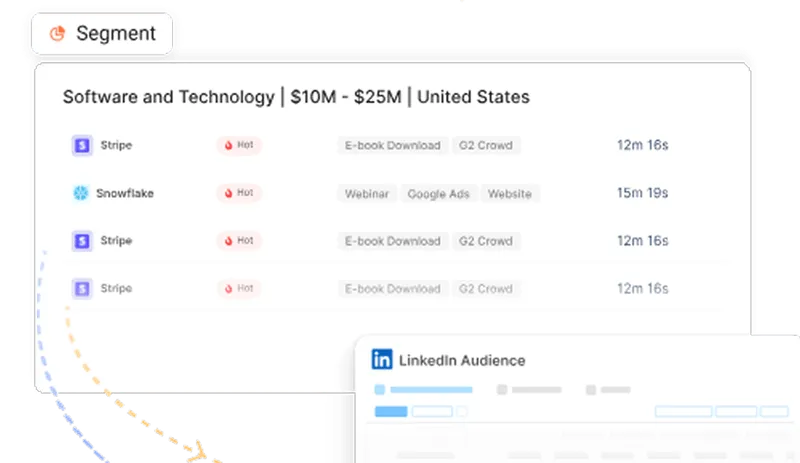
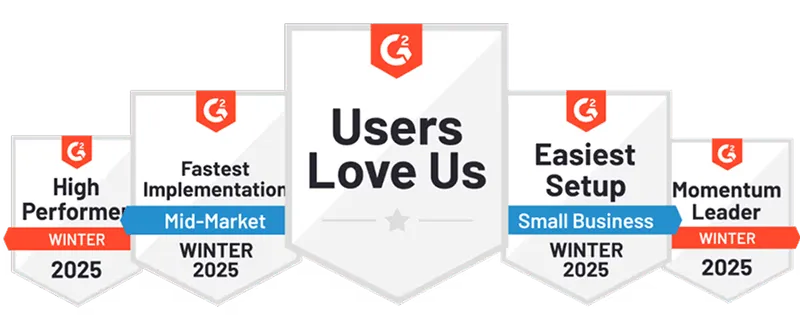
See Factors in action.
Schedule a personalized demo or sign up to get started for free
LinkedIn Marketing Partner
GDPR & SOC2 Type II
.svg)









